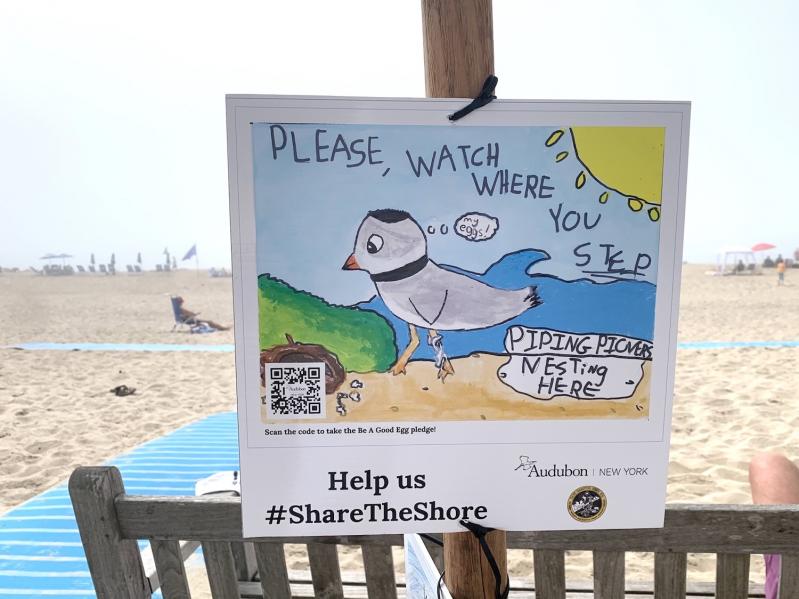A new strategy has been deployed to get people to respect plover nesting areas. No, it’s not more enforcement or weaponized trail cameras — it’s cute drawings by children, and a simple pledge.
Amagansett School fifth graders worked with the Audubon Society and the East Hampton Town Natural Resources Department to come up with designs to help educate beachgoers about the federally endangered plover and the correct way to use the beach when the birds are breeding between March and September. It’s all part of Audubon’s Be a Good Egg program.
“We received a really positive response from the Amagansett teachers and their students,” said Anna Soccorsi, an environmental analyst with the town. She said it has been a difficult season for the plovers thus far. While the town has seen the usual number of breeding pairs, about 30, many eggs have been lost to predation, mainly by crows, foxes, and raccoons. Historically, those are tough populations to communicate with.
The signs, directed to humans, include personal messages from the students with the theme of protecting the vulnerable birds and sharing the shore. One highlights how easy it is for owners to leash their dogs, versus the difficulty of raising a plover chick. The weatherproof signs have been placed at beaches near nesting areas, including Main Beach in East Hampton Village and Indian Wells and Atlantic Avenue Beaches in Amagansett.
Drew Smith, the head lifeguard for the village, said the junior lifeguards were treated to a presentation about the program last week. On Saturday the town will have an outreach program near the entrance to Main Beach, giving the public an opportunity to learn more about piping plovers.
The new signs have a QR code that leads to a link asking beachgoers to sign the Be a Good Egg pledge, which makes three simple requests. First, respect the fenced-off areas where birds nest. Second, properly dispose of trash, as it attracts raccoons and crows that then find the nests and eat the eggs. Third, don’t take dogs to beaches with nesting birds.
“Programs such as this are critical to helping our young residents understand the wealth of our natural resources in East Hampton, and the importance of safeguarding them,” Supervisor Peter Van Scoyoc said.
Ms. Soccorsi said camera traps, deployed for the first time by the town this year, have been a useful tool, helping confirm the timing and cause of nest loss. They’ve also shown that plovers continue to be victims of human disturbance, “primarily from off-leash dogs.”
Piping plovers “lay well-camouflaged eggs directly on the ground, usually on sand or shells. The beach is their only home, and individual birds often return to the same place year after year to raise their young,” according to the New York Audubon website. “When a person or dog walks through a nesting area, the adults run or fly off in fear. During nesting season, this exposes the eggs or chicks to fatally high temperatures and drastically increases the risk of predation. Off-leash dogs and cats can kill or injure birds, especially flightless chicks.”
Ms. Soccorsi said to combat the high levels of predation this year, the town has placed wire enclosures over active nests. “We’re trying to do everything we can to give them the highest chance of late-season breeding success,” she said.

